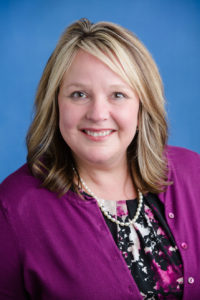Insurance is just one tool used to manage risk for a business. This basic guide is designed to help make you aware of the various exposures you may have and the types of insurance protection available. Identifying risk and determining methods and techniques to address that risk is the key to our relationships with our clients.
Aquaculture businesses offer a unique combination of activities and exposures which are both land and water based – and results in a unique set of risks. You should always feel free to ask questions of your insurance agent.
THERE ARE POLICIES TO PROTECT
Liability arising out of your operations or the products you sell: Commercial general liability insurance is a standard insurance policy issued to businesses to protect them against 3rd party liability claims for bodily injury and property damage arising out of premises they own, operations they conduct and products they sell.
Your property: Insurance can cover physical assets which can be classified as real property – this includes buildings and structures built on the land and business personal property (contents), which includes furnishings, fixtures and equipment and inventory in/on or adjacent to those structures.
Your equipment: Coverage known as inland marine insurance is property insurance designed to cover the things which can be moved around (mobile equipment, gear, etc.).
Shipment of your property: Transportation insurance is a policy offering coverage on the insured’s property while it is in overland transit from one location to another on any necessary mode of transport, including transport by land, air and water. Coverage applies when insurance is desired on property owned by you, whether the property is shipped in your vehicles or in public conveyances. Coverage can include spoilage arising from overturn or failure of refrigerating equipment
Shipment of your product overseas: Ocean cargo insurance is a type of insurance covering goods being shipped overseas (air or ocean), with coverage provided from the point of origin (your place) to final destination.
Piers/docks/wharves insurance: This provides property insurance for your (owned or leased by you) piers, wharves and docks, floats, platforms, gangplanks, pilings, wiring, pipes, (water lines, gas lines, electrical power, lighting fixtures and equipment permanently affixed).
Your heating-cooling-refrigerating-circulating equipment: Equipment breakdown insurance provides coverage for loss due to mechanical or electrical breakdown of equipment, Coverage applies to the cost to repair or replace the equipment and any other property damaged by equipment breakdown. (Spoilage of your product.)
Your money/your assets: Commercial crime insurance protects a business from losses arising out of business-related crime. Protection through the policy can cover cash, assets, merchandise or other property loss when someone perpetrates fraud, embezzlement, forgery, misrepresentation, robbery, theft or any other type of business‐related crime on the company.
Any and all online activities: Cyber insurance is designed to cover consumers of technology services or products. More specifically, these policies are intended to cover a variety of both liability and property losses which may result when a business engages in various electronic activities, such as e-commerce, collecting confidential data (customers & employees) within an internal electronic network and the myriad of banking activities. An increasing exposure is created by connection to the grid for utility services and the operation of manufacturing equipment with Internet or cloud-based systems.
Damage to your vessel(s) including barges and floating work platforms: Commercial hull insurance provides coverage for physical loss or damage to a vessel’s hull and machinery (for those listed on your policy). Trailers can be included on a hull policy as can coverage for simple pollution cleanup.
Liability arising out of your ownership and operation of vessel(s): Protection & Indemnity provides coverage for a vessel owner’s or operator’s liabilities arising out of the operation of vessels listed on your policy such as damage to third party property, third party bodily injury or injury/death to a crew member.
Clean up and expenses arising out of a pollution event: This is a type of coverage created specifically to manage the costs associated with pollution clean-up (from a vessel) as defined in the Oil Pollution Act of 1990 and or state and local regulations.
Vehicles and trailers you own or lease: A commercial auto policy includes auto liability (injury or property damage to a 3rd party) and auto physical damage coverages (comprehensive & collision) as well as medical payments for passengers within your vehicle (excluding employees).
Injury to your employees: Coverage for injury to an employee may be provided by either your state act workers compensation or the Jones Act. Understanding which applies to your employees is essential to managing this risk.
Employment practices liability: This type of liability insurance covers wrongful acts arising from the employment process. The most frequent types of claims covered under such policies include: wrongful termination, discrimination, sexual harassment and retaliation.
You may want or need a number of insurance policies (including those listed above or others), depending on your operations, activities and your appetite for risk.
Your insurance policies may all come from the same company or they may come from several different companies. As an independent insurance agent, we can help you identify risk, formulate solutions to address those risks and develop insurance coverage appropriate and specific to your business.







